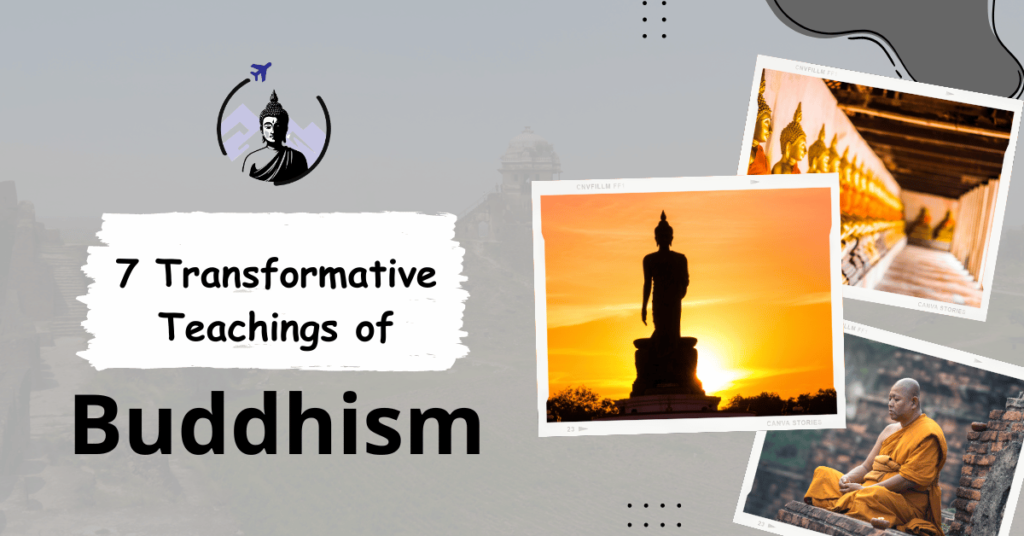In the whirlwind of today’s crazy world, finding inner peace can feel like looking for a needle in a haystack. but guess what? Buddhism has got your back!
Imagine a life where stress takes a back seat, and peace becomes your co-pilot. That’s what we’re looking for here: uncovering seven game-changing teachings from Buddhism, designed to kick-start your journey toward inner peace.
So buckle up and get ready to find out how ancient wisdom can revolutionize your modern-day hustle and bustle. Let’s unlock the secrets together and embrace the peace within the chaos. Welcome to the world of Buddhism!
In Hindi
आज की पागल दुनिया के बवंडर में, आंतरिक शांति ढूंढना भूसे के ढेर में सुई की तलाश करने जैसा महसूस हो सकता है। लेकिन अंदाज़ा लगाओ कि क्या है? बौद्ध धर्म को आपका साथ मिल गया है!
एक ऐसे जीवन की कल्पना करें जहां तनाव पीछे चला जाता है, और शांति आपका सह-पायलट बन जाती है। हम यहां इसी पर विचार कर रहे हैं: बौद्ध धर्म से सात गेम-चेंजिंग शिक्षाओं को उजागर करना, जो आंतरिक शांति की दिशा में आपकी यात्रा को शुरू करने के लिए तैयार की गई हैं।
तो कमर कस लें और यह पता लगाने के लिए तैयार हो जाएं कि कैसे प्राचीन ज्ञान आपके आधुनिक समय की हलचल में क्रांति ला सकता है। आइए एक साथ रहस्यों को खोलें और अराजकता के भीतर शांति को अपनाएं। बौद्ध धर्म की दुनिया में आपका स्वागत है!
“Do not dwell in the past, do not dream of the future, concentrate the mind on the present moment.”
Gautam buddha
Table of Contents
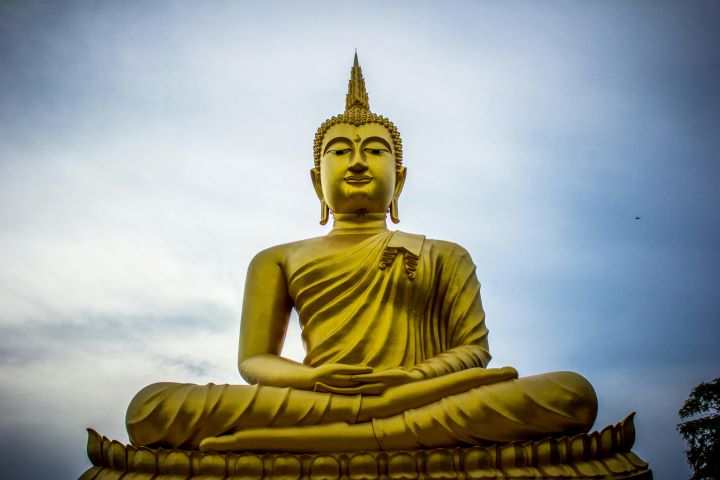
Must To Know
| Question | Answer |
|---|---|
| What are the Four Noble Truths? | Suffering, Origin, Cessation, Path |
| What is the Noble Eightfold Path? | Eightfold |
| What does “Anicca” mean in Buddhism? | Impermanence |
| What is the concept of “Anatta”? | Non-self |
| What is “Metta” in Buddhism? | Loving-kindness |
| What is the significance of “Sati”? | Mindfulness |
| What does “Sunyata” represent? | Emptiness |
| How many steps are there in the Noble Eightfold Path? | Eight |
| What is the first step of the Eightfold Path? | Right View |
| What is the last step of the Eightfold Path? | Right Concentration |
| What does “Dukkha” refer to? | Suffering |
| What is the goal of Buddhism? | Enlightenment |
| What is the purpose of loving-kindness meditation? | Compassion |
| How does mindfulness contribute to inner peace? | Awareness |
| What does the concept of non-self teach? | Liberation |
| What is the core idea of the Four Noble Truths? | Dukkha |
| How does Buddhism view attachment? | Detrimental |
| What is the role of Right Livelihood in the Eightfold Path? | Ethical work |
| What is the opposite of “Dukkha”? | Peace |
| What is the ultimate goal of the Buddhist path? | Nirvana |
आपको अवश्य जानना चाहिए
| प्रश्न | उत्तर |
|---|---|
| चार आर्य सत्य क्या हैं? | दुःख, उत्पत्ति, निरोध, मार्ग |
| आर्य अष्टांगिक मार्ग क्या है? | आठगुणी |
| “अनिच्चा” धारणा में क्या अर्थ है? | अस्थायिता |
| “अनत्ता” का अर्थ क्या है? | अवास्तविकता |
| धर्म में “मेत्ता” क्या है? | दयाभाव |
| “सति” का महत्व क्या है? | समझ |
| “शून्यता” क्या प्रतिनिधित्व करता है? | शून्यता |
| आर्य अष्टांगिक मार्ग में कितने कदम होते हैं? | आठ |
| आठगुणी मार्ग का पहला कदम क्या है? | सही दृष्टिकोण |
| आठगुणी मार्ग का अंतिम कदम क्या है? | सही समाधि |
| “दुःख” का क्या अर्थ है? | दुःख |
| बौद्ध धर्म का लक्ष्य क्या है? | बोध |
| दयाभाव में ध्यान धारण का क्या उद्देश्य है? | करुणा |
| साक्षात्कार कैसे अंतर्निहित शांति में योगदान देता है? | जागरूकता |
| “अनत्ता” धारणा क्या सिखाती है? | मुक्ति |
| चार आर्य सत्य का मुख्य आदर्श क्या है? | दुःख |
| बौद्ध धर्म कैसे आसक्ति को देखता है? | हानिकारक |
| आठगुणी मार्ग में “सही जीविका” का क्या कार्य है? | नैतिक कार्य |
| “दुःख” का विपरीत क्या है? | शांति |
| बौद्ध पथ का परम उद्देश्य क्या है? | निर्वाण |
The Four Noble Truths of Buddhism
The Four Noble Truths are like a blueprint for understanding life according to Buddhism. First, we’ve got “dukkha,” which basically means suffering or dissatisfaction.
It’s like realizing that life isn’t always rainbows and butterflies, right? Next, “Community” explores the root cause of all this suffering – often, it is our cravings and desires that throw us out of balance.

But hey, here’s the good news: “Nirodha” is about ending that suffering. It’s like finding the off switch for your stress and worries. Ultimately, “Magga” points the way to the off switch that guides you toward peace and contentment.
When you understand these truths, it’s like wearing clarity glasses – suddenly, you see life in a whole new light. Understanding the Four Noble Truths is not just about philosophy; It’s about finding your way to inner peace amidst the ups and downs of life.
बौद्ध धर्म के चार आर्य सत्य
चार आर्य सत्य बौद्ध धर्म के अनुसार जीवन को समझने के लिए खाका की तरह हैं। सबसे पहले, हमें “दुक्खा” मिला है, जिसका मूल रूप से मतलब पीड़ा या असंतोष है।
यह महसूस करने जैसा है कि जीवन हमेशा इंद्रधनुष और तितलियाँ नहीं होता है, है ना? इसके बाद, “समुदाय” इस सभी दुखों के मूल कारण की पड़ताल करता है – अक्सर, यह हमारी लालसाएं और इच्छाएं होती हैं जो हमें संतुलन से बाहर कर देती हैं।
लेकिन हे, यहाँ अच्छी खबर है: “निरोधा” उस पीड़ा को समाप्त करने के बारे में है। यह आपके तनाव और चिंताओं का ऑफ स्विच ढूंढने जैसा है। अंत में, “मैग्गा” उस ऑफ स्विच तक पहुंचने का रास्ता बताता है, जो आपको शांति और संतुष्टि की ओर मार्गदर्शन करता है।
जब आप इन सच्चाइयों को समझ लेते हैं, तो यह स्पष्टता का चश्मा पहनने जैसा है – अचानक, आप जीवन को एक बिल्कुल नई रोशनी में देखते हैं। चार आर्य सत्यों को समझना केवल दर्शन के बारे में नहीं है; यह जीवन के उतार-चढ़ाव के बीच आंतरिक शांति के लिए अपना रास्ता खोजने के बारे में है।
The Noble Eightfold Path in Buddhism
Let’s understand the Noble Eightfold Path—it’s like your roadmap to inner peace. First, we’ve got “right perspective”, which is about seeing things as they really are, not as we want them to be.
Then, there is “right intention,” where we set our hearts on good feelings and positive actions. Moving on to “right speech”, it is about speaking kindly and truthfully, no gossip allowed! “Right Action” follows suit, urging us to walk the talk and do what is right.
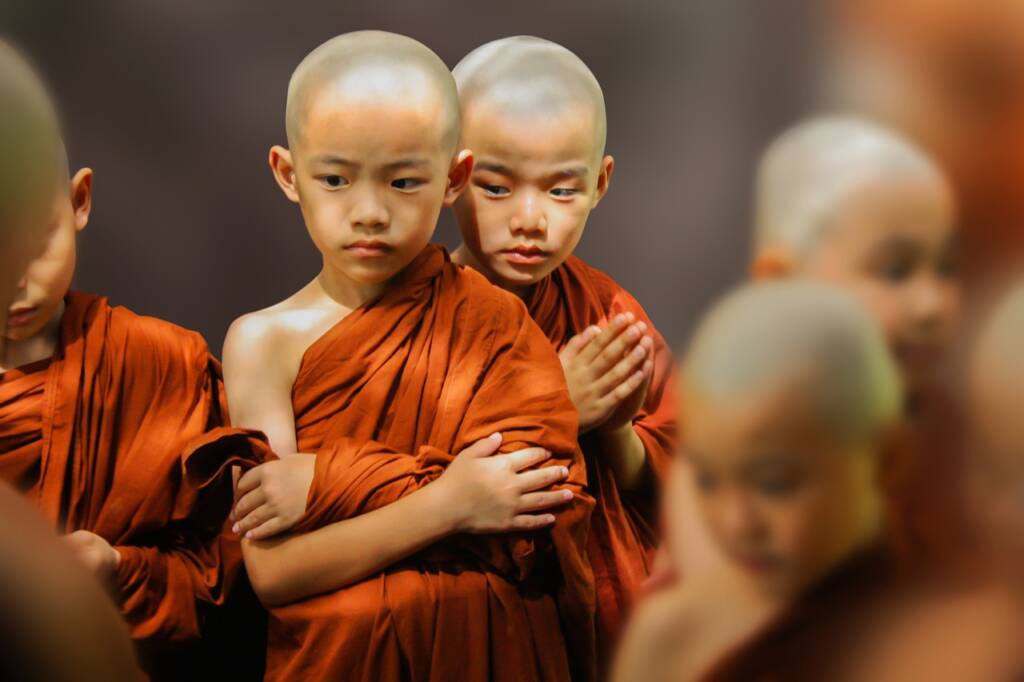
“Right livelihood” means earning a living in a way that does not harm others or oneself. “Right Effort” reminds us to keep moving toward goodness, even when it’s hard. “Right Mindfulness” teaches us to stay in the present, enjoying every moment without judgment.
Finally, “right concentration” helps us focus our minds, like tuning the radio to the most melodious station. By incorporating these principles into our daily lives, we pave the way for inner peace to flourish like never before. So, let’s roll up our sleeves and start practicing, one step at a time!
बौद्ध धर्म में आर्य अष्टांगिक मार्ग
आइए आर्य अष्टांगिक पथ को समझें—यह आंतरिक शांति के लिए आपके रोडमैप की तरह है। सबसे पहले, हमें “सही दृष्टिकोण” मिला है, जो चीजों को वैसे देखने के बारे में है जैसे वे वास्तव में हैं, न कि उस तरह जैसा हम चाहते हैं कि वे हों।
फिर, “सही इरादा” है, जहां हम अपना दिल अच्छी भावनाओं और सकारात्मक कार्यों पर लगाते हैं। “सही वाणी” की ओर बढ़ते हुए, यह दयालुतापूर्वक और सच्चाई से बोलने के बारे में है, किसी गपशप की अनुमति नहीं है!
“सही कार्रवाई” इसी का अनुसरण करती है, हमें बात पर चलने और जो सही है उसे करने का आग्रह करती है। “सही आजीविका” का अर्थ है इस तरह से जीविकोपार्जन करना जिससे दूसरों को या खुद को नुकसान न हो।
“सही प्रयास” हमें अच्छाई की ओर बढ़ते रहने की याद दिलाता है, भले ही यह कठिन हो। “राइट माइंडफुलनेस” हमें वर्तमान में बने रहना, बिना किसी निर्णय के हर पल का आनंद लेना सिखाती है।
अंत में, “सही एकाग्रता” हमें अपने दिमाग को केंद्रित करने में मदद करती है, जैसे रेडियो को सबसे मधुर स्टेशन पर ट्यून करना। इन सिद्धांतों को अपने दैनिक जीवन में शामिल करके, हम आंतरिक शांति के लिए पहले की तरह पनपने का मार्ग प्रशस्त करते हैं। तो, आइए अपनी आस्तीन ऊपर उठाएं और अभ्यास शुरू करें, एक समय में एक कदम!
Impermanence (Anicca)
In Buddhism, impermanence, known as “Anika”, is like the ultimate truth serum. It’s all about understanding that everything in life is constantly changing – nothing always stays the same. Sounds scary, right?
But the point here is this: embracing this mortality can be really liberating. Imagine: You’re holding on tightly to something, whether it’s a job, a relationship, or a belief.
But when you realize that nothing is permanent, suddenly that grip loosens. You begin to let go of attachments, expectations and fears. And guess what will happen next?
Peace blows like a cool breeze on a hot day. You are not burdened with trying to control the uncontrollable. Instead, you are riding the waves of life with ease, knowing that change is a part of the beautiful journey called “Buddhism.”
अनित्यता (अनिका)
बौद्ध धर्म में, अनित्यता, जिसे “अनिका” के नाम से जाना जाता है, परम सत्य सीरम की तरह है। यह सब समझने के बारे में है कि जीवन में सब कुछ लगातार बदल रहा है – कुछ भी हमेशा एक जैसा नहीं रहता है। डरावना लगता है, है ना?
लेकिन यहाँ मुख्य बात यह है: इस नश्वरता को अपनाना वास्तव में मुक्तिदायक हो सकता है। कल्पना कीजिए: आप किसी चीज़ को कस कर पकड़े हुए हैं, चाहे वह नौकरी हो, कोई रिश्ता हो, या कोई विश्वास हो।
लेकिन जब आपको एहसास होता है कि कुछ भी स्थायी नहीं है, तो अचानक वह पकड़ ढीली हो जाती है। आप आसक्तियों, अपेक्षाओं और भय को छोड़ना शुरू कर देते हैं। और सोचो आगे क्या होगा? शांति गर्म दिन में ठंडी हवा की तरह बहती है।
आप बेकाबू को नियंत्रित करने की कोशिश के बोझ से दबे नहीं हैं। इसके बजाय, आप जीवन की लहरों पर आसानी से सवारी कर रहे हैं, यह जानते हुए कि परिवर्तन “बौद्ध धर्म” नामक खूबसूरत यात्रा का एक हिस्सा है।
Non-Self (Anatta)
Let’s look at the fascinating concept of no-self, or anatta, in Buddhism. So, picture this: Buddhism teaches that there is no fixed, immutable “self” or soul hidden inside us.
Instead, we are like a flowing river, constantly changing and evolving. Sounds wild, doesn’t it? But here’s the important thing: accepting this idea can be a game-changer in your quest for inner peace.
You see, a lot of our suffering comes from clinging to things that aren’t permanent – like our identity, possessions or relationships. But when we adopt the notion of no-self, we give up this attachment.

Suddenly, the burden of expectations and worries begins to lift from our shoulders. We are no longer defined by fleeting things, but by our deep connection with the universe.
It’s like stepping into a tranquil oasis amidst the chaos of life. So, in short, embracing the non-self in Buddhism does not mean losing yourself; It’s about finding a whole new level of freedom and peace within yourself.
अनत्ता
आइए बौद्ध धर्म में गैर-स्व, या अनात्ता की आकर्षक अवधारणा पर गौर करें। तो, इसे चित्रित करें: बौद्ध धर्म सिखाता है कि हमारे अंदर कोई निश्चित, अपरिवर्तनीय “स्वयं” या आत्मा छिपी नहीं है।
इसके बजाय, हम एक बहती हुई नदी की तरह हैं, जो लगातार बदल रही है और विकसित हो रही है। जंगली लगता है, है ना? लेकिन यहाँ महत्वपूर्ण बात यह है: इस विचार को स्वीकार करना आपकी आंतरिक शांति की खोज में गेम-चेंजर हो सकता है।
देखिए, हमारी बहुत सारी पीड़ाएँ उन चीज़ों से चिपके रहने से आती हैं जो स्थायी नहीं हैं – जैसे हमारी पहचान, संपत्ति या रिश्ते। लेकिन जब हम गैर-स्व की धारणा को अपनाते हैं, तो हम इस लगाव को छोड़ देते हैं।
अचानक, उम्मीदों और चिंताओं का बोझ हमारे कंधों से उतरने लगता है। हम अब क्षणभंगुर चीज़ों से नहीं, बल्कि ब्रह्मांड के साथ हमारे गहरे संबंध से परिभाषित होते हैं। यह जीवन की उथल-पुथल के बीच एक शांत मरूद्यान में कदम रखने जैसा है।
तो, संक्षेप में, बौद्ध धर्म में गैर-स्व को गले लगाने का मतलब खुद को खोना नहीं है; यह अपने भीतर स्वतंत्रता और शांति का एक बिल्कुल नया स्तर खोजने के बारे में है।
Loving-Kindness (Metta)
Let’s look at the beautiful concept of loving-kindness, also called “metta” in Buddhism. Imagine this: You are sitting comfortably, eyes closed, breathing slowly.
With each breath, you are not only inhaling and exhaling air, but you are also exhaling love and kindness into the universe. This is the meaning of loving-kindness meditation.
It’s like giving your heart a big, warm hug! In Buddhism, this practice is not just about behaving well toward others; It’s also about being good to yourself. Imagine wrapping yourself in a comforting blanket of compassion, understanding, and acceptance.
It’s about seeing the good in yourself and others, even when things get tough. What else? The more you practice loving-kindness, the more it will grow. It’s like watering a plant – you nurture it, and it flourishes. So, hop on the love train, because in the world of Buddhism, kindness really does make the world go ’round!
प्रेम-कृपा (मेटा)
Mindfulness (Sati)
Let’s understand mindfulness, the rockstar of Buddhism! Picture this: It’s like taking a mental gym membership, but instead of weights, you’re increasing awareness.
In Buddhism, mindfulness is not just a buzzword; This is the key to unlocking inner peace. So, what’s the deal? It’s about being in tune with the present moment – whether you’re drinking tea or walking your dog.
Now, here’s the good part: You can practice mindfulness anywhere, anytime. Try this: While washing dishes, feel the hot water, see the soap bubbles, and breathe. Look, easy peasy!
These small moments of mindfulness re-energize your brain for peace amidst the chaos of life. So, whether you’re stuck in traffic or chilling at home, remember, mindfulness is your superpower provided by Buddhism to enjoy every taste of life.
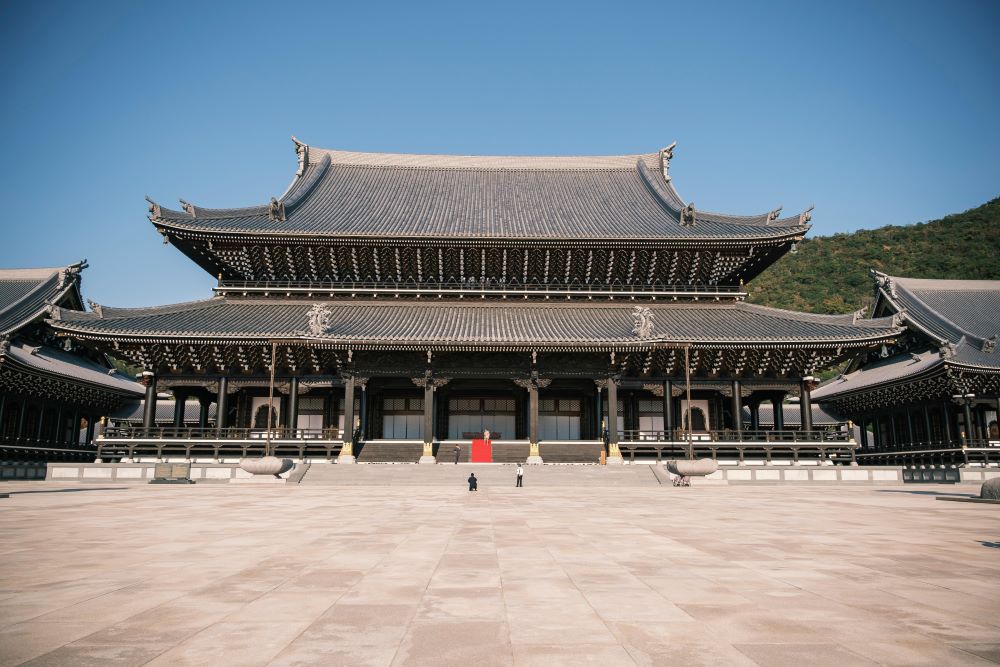
सती
आइए सती को समझें, बौद्ध धर्म के रॉकस्टार! इसे चित्रित करें: यह मानसिक जिम की सदस्यता लेने जैसा है, लेकिन वजन के बजाय, आप जागरूकता बढ़ा रहे हैं।
बौद्ध धर्म में, सचेतनता केवल एक प्रचलित शब्द नहीं है; यह आंतरिक शांति को खोलने की कुंजी है। तो, सौदा क्या है? यह वर्तमान क्षण में तालमेल बिठाने के बारे में है – चाहे आप चाय पी रहे हों या अपने कुत्ते को घुमा रहे हों।
अब, यहाँ अच्छा हिस्सा है: आप कहीं भी, कभी भी माइंडफुलनेस का अभ्यास कर सकते हैं। इसे आज़माएँ: बर्तन धोते समय, गर्म पानी को महसूस करें, साबुन के बुलबुले को देखें और साँस लें। देखो, आसान मटर!
सचेतनता के ये छोटे-छोटे क्षण आपके मस्तिष्क को जीवन की उथल-पुथल के बीच शांति के लिए पुनः ऊर्जा प्रदान करते हैं। इसलिए, चाहे आप ट्रैफिक में फंसे हों या घर पर ठंड से ठिठुर रहे हों, याद रखें, जीवन के हर स्वाद का आनंद लेने के लिए सचेतनता बौद्ध धर्म द्वारा प्रदत्त आपकी महाशक्ति है।
Emptiness (Sunyata)
Let’s understand emptiness, or sunyata, in Buddhism. Picture this: You’re looking at a glass half full, but Buddhism says, “Hey, wait a minute, is it really half full or half empty?”
It is not emptiness per such that defines emptiness, but rather the notion that nothing has an innate existence. It’s like realizing that the glass is not just half full or half empty – it is both and neither at the same time!
This concept may seem mind-boggling, but it stuck with me. In Buddhism, understanding emptiness means letting go of one’s strong hold on reality.
When we stop clinging to things as solid and permanent, we free ourselves from suffering and find a deep sense of peace. It’s like learning to dance with the changing rhythms of life instead of fighting it.
So, embrace the emptiness, my friend, and watch as it frees you on a journey of self-discovery within the realm of Buddhism.
शून्यता
आइए बौद्ध धर्म में शून्यता, या शून्यता को समझें। इसे चित्रित करें: आप एक गिलास को आधा भरा हुआ देख रहे हैं, लेकिन बौद्ध धर्म कहता है, “अरे, एक मिनट रुकें, क्या यह वास्तव में आधा भरा है या आधा खाली है?”
यह ख़ालीपन नहीं है जो ख़ालीपन को परिभाषित करता है, बल्कि यह धारणा है कि किसी भी चीज़ का कोई जन्मजात अस्तित्व नहीं है। यह इस बात को समझने जैसा है कि गिलास सिर्फ आधा भरा या आधा खाली नहीं है – यह एक ही समय में दोनों है और दोनों में से कोई भी नहीं!
यह अवधारणा अटपटी लग सकती है, लेकिन यह मुझ पर हावी हो गई। बौद्ध धर्म में, शून्यता को समझने का अर्थ वास्तविकता पर अपनी मजबूत पकड़ को छोड़ना है। जब हम चीजों को ठोस और स्थायी मानकर चिपकना बंद कर देते हैं, तो हम खुद को दुख से मुक्त कर लेते हैं और शांति की गहरी अनुभूति पाते हैं।
यह जीवन से लड़ने के बजाय उसकी बदलती लय के साथ नृत्य करना सीखने जैसा है। तो, खालीपन को गले लगाओ, मेरे दोस्त, और देखो कि यह तुम्हें बौद्ध धर्म के दायरे में आत्म-खोज की यात्रा पर मुक्त करता है।
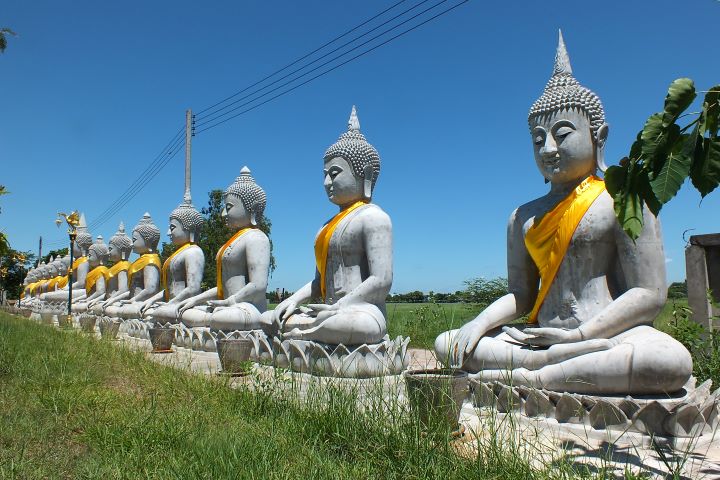
conclusion
We’ve covered some serious ground in our journey through the transformative teachings of Buddhism. From the Four Noble Truths to the practice of loving-kindness, we’ve uncovered the keys to inner peace that have been passed down through the ages.
Now, here’s the real magic: applying these teachings to your everyday life. Picture this: When the going gets tough, you are armed with the knowledge of mortality, mindfulness, and compassion.
It’s like having a secret stash of peace in your back pocket. So, my fellow travelers, let’s make a pact to incorporate these teachings into our daily routine.
Whether it’s taking a moment for mindfulness during your morning coffee or spreading a little extra kindness throughout your day, each small step brings us closer to the lasting inner peace we desire. Let us together keep the spirit of Buddhism alive in our hearts and actions.
If you have interested in Buddhism and Bihar’s history, You must be to read our Bodhgaya, Rajgir, Patna, Vaishali, Nalanda or, Pawapuri’s blog.

Why Buddhism decline in India?
Various factors such as the revival of Hinduism in India, loss of royal patronage and increase in invasions by foreign rulers led to the decline of Buddhism. Additionally, internal divisions and changes in social values also contributed to its decline.
Who converted Ashoka to Buddhism?
Ashoka was converted to Buddhism by a Buddhist monk named Upagupta. Ashoka’s encounter with Upagupta aroused his keen interest in Buddhism, leading him to eventually adopt it as his favorite religion and become one of its most influential patrons.
Are Buddhism and Hinduism the same?
There are some similarities between Buddhism and Hinduism but they are different religions. Both originated in ancient India and share concepts such as karma and meditation. However, they differ in their beliefs regarding the nature of divinity, the ultimate goal of life, and the path to enlightenment.
Can Buddhism eat meat?
Yes, Buddhism allows meat eating, but some followers choose vegetarianism out of compassion for animals. The main thing is to avoid causing direct harm to living beings. This decision varies between different Buddhist traditions and individual beliefs.
Where Buddhism Originated?
About 2,500 years ago, in ancient India, Buddhism first emerged. Siddhartha Gautama, also referred to as the Buddha or the Enlightened One, founded it. Under the Bodhi tree, which is currently located in Bodhgaya, India, he obtained enlightenment.
Who founded Buddhism?
Siddhartha Gautama, often known as the Buddha, established Buddhism. He was born in ancient India and spent years in meditation and introspection before reaching enlightenment. The core ideas of Buddhism are derived from his teachings on obtaining enlightenment and conquering suffering.

